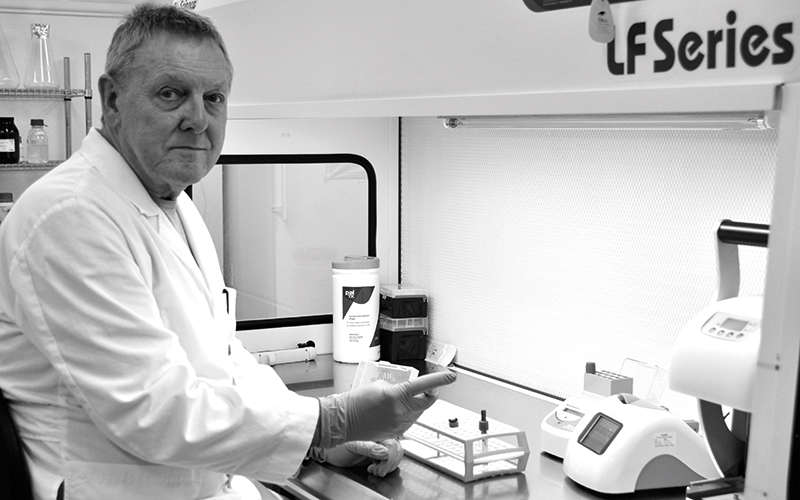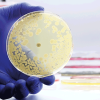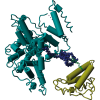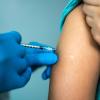At the age of 69, Ron Turner was awarded a PhD for his work on antimicrobial resistance. We hear about his experiences.

What is your background in biomedical science?
I began my career as a laboratory technician in NHS laboratories.
I have worked as a development scientist and run my own clinical laboratory offering IgG food intolerance and chemical intolerance testing, together with thyroid diagnostics.
I also set up Test & Treat Ltd (UK) to commercialise my patented technology for point-of-care testing (POCT) – detection of bacterial infection and antibiotic susceptibility and resistance.
What made you decide to do a PhD?
I was invited to register for a PhD at the University of East Anglia by Professor John Wain after mentioning that I had proven my POCT technology worked on companion animal samples. As the title indicates, “A point of care solution for the detection and antibiotic susceptibility testing for lower urinary tract infection (UTI)”, the entire body of work relates directly to the technology.
Did you come across any challenges or resistance due to your age?
None at all.
Were there any advantages to doing a PhD as a mature student?
I think perhaps, as one gets older there is an awareness of our mortality, coupled with a focused workrate and desire to succeed, that may not have been evident in my 20s and 30s.
How and why did you decide on the topic?
The challenge began when I asked a friend why ATP bioluminescence had never been applied to antibiotic susceptibility testing (bioluminescence had been utilised for bacterial detection for many years up to that point). I told him “I think I know how it might be done”. He laughed and we agreed to stay in touch. It worked better than I had hoped, and the event was captured in my ongoing diary: “I have achieved!”
How long did it take to complete your PhD?
I registered for my PhD in June 2015 and it was awarded in July 2019. I worked, essentially, full time on PhD technical work plus writing. My time was shared with commercialisation of the technology through Test & Treat.
What is the key takeaway message from your PhD?
It’s never too late to try to make a difference and that hard work, generally, pays off – not materially, but in the sense that the technology can be of benefit to patients, in both veterinary and human medicine.
Did the work make you feel hopeful or pessimistic for the future regarding AMR?
I hope that, if only in a small way, this technology can contribute to more targeted prescribing and be a tool for use against AMR.
What advice would you give others who are considering PhDs or further education as mature students?
Be prepared for soul-destroying days and nights and frustration as barriers appear to be put in your way. However, when you feel like quitting, you should always think about why you started.
What's next for you?
My immediate hope is that bigger companies can link with Test & Treat to push the technology forward, particularly into the human markets and with additional clinical applications that will benefit animal and human patients.




